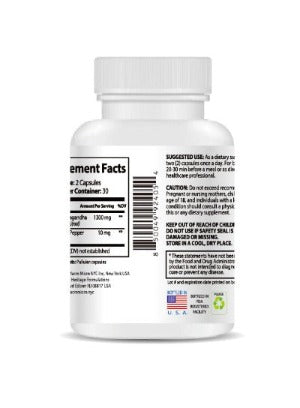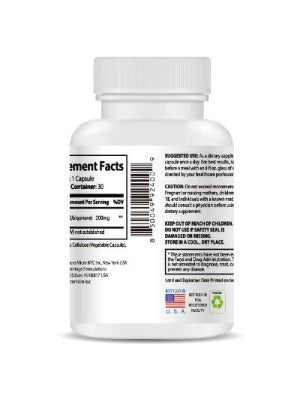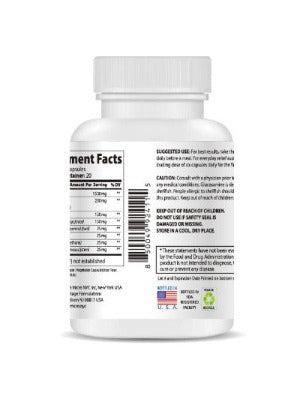Dry Eye Syndrome: A 2025 Perspective
In 2025, the digital age has brought about an unprecedented rise in cases of dry eye syndrome. The constant strain of staring at screens, coupled with environmental factors like air conditioning and pollution, leaves millions suffering from the discomfort of dry, irritated eyes. This isn't just a minor inconvenience; dry eye syndrome can significantly impact your quality of life, affecting your vision, productivity, and overall well-being. The persistent dryness, burning, and itching can disrupt sleep, reduce concentration, and even affect your social interactions. But don't despair! This comprehensive guide explores the causes, symptoms, and most importantly, effective solutions to find lasting relief from dry eye syndrome. We'll delve deeper into understanding the condition, examine various treatment options, and provide practical strategies for managing and mitigating its effects. Prepare to reclaim your comfort and rediscover the joy of clear, healthy vision.
Understanding the Nuances of Dry Eye Syndrome
Dry eye syndrome, also known as keratoconjunctivitis sicca, occurs when your eyes don't produce enough tears or when the tears produced are of poor quality, evaporating too quickly. This delicate imbalance disrupts the natural lubrication system of your eyes, leading to a wide array of unpleasant symptoms. The severity and specific symptoms can vary considerably from person to person, but understanding the common manifestations is key to effective management.
A Spectrum of Symptoms: Recognizing the Signs
The symptoms of dry eye syndrome can range from mild discomfort to significant visual impairment. Some common indicators include:
- Burning and Stinging: A persistent burning or stinging sensation in the eyes is a hallmark symptom.
- Itching and Irritation: A constant itchiness or irritation, often accompanied by a gritty feeling, can be quite disruptive.
- Redness and Inflammation: The eyes may appear red, inflamed, and bloodshot due to the lack of lubrication and increased friction.
- Gritty or Sandy Feeling: This feeling is often described as having something like sand or grit in the eyes.
- Blurred Vision: The fluctuating tear film can lead to temporary blurred or fluctuating vision.
- Excessive Tearing (Paradoxical): Ironically, some individuals with dry eyes experience excessive tearing as their eyes attempt to compensate for the lack of sufficient lubrication.
- Increased Sensitivity to Light (Photophobia): Dry eyes are often more sensitive to light, making even normal light levels uncomfortable.
- Eye Fatigue and Tiredness: The constant discomfort and strain of dry eyes can lead to significant eye fatigue and tiredness, affecting your overall energy levels.
- Stringy Mucus: In some cases, you might notice stringy mucus in or around your eyes.
The severity of these symptoms can vary greatly. Some individuals may experience only mild discomfort occasionally, while others face chronic, debilitating symptoms that severely impact their daily lives. If you suspect you might have dry eye syndrome, seeking a professional diagnosis is crucial.
Unraveling the Causes: Understanding the Underlying Factors
Dry eye syndrome isn't simply a single cause; it's often a complex interplay of various factors. Understanding these contributing factors is critical for effective management and prevention.
- Age-Related Changes: Tear production naturally declines with age, making older adults more susceptible to dry eyes.
- Environmental Factors: Dry air, wind, extreme temperatures, and pollutants can accelerate tear evaporation, worsening dry eye symptoms.
- Medical Conditions: Certain autoimmune diseases (such as rheumatoid arthritis and Sjögren's syndrome), allergies, and hormonal imbalances can all affect tear production and quality.
- Medications: Many medications, including antihistamines, decongestants, antidepressants, and birth control pills, can have drying effects on the eyes as a side effect.
- Lifestyle Factors: Extended screen time (computer, phone, tablet use), lack of sleep, dehydration, and poor diet can contribute to dry eyes.
- Contact Lenses: Contact lenses, while helpful for vision correction, can sometimes exacerbate dry eye symptoms.
5 Effective Ways to Find Relief from Dry Eye Syndrome
- Hydration: The Cornerstone of Eye Health: Staying adequately hydrated is fundamental for overall health, and this extends to the health of your eyes. Dehydration can significantly reduce tear production, making dry eye symptoms worse. Aim for consistent hydration throughout the day by drinking plenty of water and incorporating hydrating foods into your diet.
- The Art of Blinking: Conscious Lubrication: In our digital age, many of us unintentionally reduce our blink rate while focusing on screens. Blinking is crucial for natural lubrication, and reducing the frequency disrupts this process. Make a conscious effort to blink more frequently, especially when using digital devices. The 20-20-20 rule (look at something 20 feet away for 20 seconds every 20 minutes) is a helpful technique to incorporate.
- Artificial Tears: Temporary Relief, Not a Cure: Over-the-counter artificial tears can provide temporary relief from dryness and discomfort, offering immediate soothing relief. Choose preservative-free options to minimize the risk of further irritation. Remember, however, that artificial tears only address the symptoms and are not a long-term solution for the underlying cause of dry eye syndrome.
- Warm Compresses: Soothing and Stimulating: Applying a warm, damp compress to your closed eyelids for several minutes can help stimulate tear production and alleviate irritation. The gentle heat can relax the eye muscles and improve blood circulation, promoting more natural lubrication.
-
Harnessing Ancient Wisdom: Introducing Wise Quest Soothing Eye Patches: For a more holistic and proactive approach to managing dry eye syndrome, consider incorporating Wise Quest Soothing Eye Patches - 1-Month Care Pack into your routine. These innovative patches utilize the principles of traditional Chinese herbal medicine to provide fundamental relief from eye fatigue, dryness, astringency, redness, and swelling. They promote healthy blood circulation, potentially addressing many underlying causes of eye discomfort.
 Experience the soothing relief and noticeable improvement in eye health with regular use. The natural ingredients work to soothe irritation and promote a healthier tear film.
Experience the soothing relief and noticeable improvement in eye health with regular use. The natural ingredients work to soothe irritation and promote a healthier tear film.
Long-Term Strategies for Managing and Preventing Dry Eye Syndrome
While the immediate relief methods discussed above are valuable, addressing the underlying causes of dry eye syndrome is crucial for long-term management and prevention. This proactive approach can significantly reduce the frequency and severity of symptoms.
- Strategic Screen Time Management: Minimize prolonged screen time, and prioritize frequent breaks to allow your eyes to rest and recover.
- Environmental Optimization: Use a humidifier to add moisture to the air, particularly during dry seasons or in air-conditioned environments. Consider air purifiers to reduce exposure to airborne irritants.
- Protective Eye Wear: Wear protective eyewear, such as sunglasses or safety glasses, to shield your eyes from wind, sun, dust, and other environmental irritants.
- Regular Eye Care Professional Consultations: Schedule regular checkups with your ophthalmologist or optometrist for thorough examinations and personalized treatment plans. Early detection and intervention can significantly improve outcomes.
- Holistic Lifestyle Choices: Prioritize a healthy lifestyle encompassing a balanced diet rich in omega-3 fatty acids, sufficient sleep, stress management techniques, and regular exercise. These holistic choices contribute to overall well-being, positively impacting eye health.
- Consider Prescription Eye Drops: Your doctor might recommend prescription eye drops, such as Restasis or Xiidra, that aim to boost tear production or reduce inflammation.
- Punctal Plugs: In more severe cases, your doctor might consider punctal plugs, small devices inserted into the tear ducts to prevent tears from draining too quickly.
Conclusion: Reclaim Your Eye Comfort and Vision
Dry eye syndrome is a common condition, but it doesn't have to dictate your daily life. By understanding the intricacies of the condition, implementing the practical strategies outlined in this guide, and seeking professional guidance when needed, you can effectively manage and even prevent dry eye symptoms. Remember, a combination of immediate relief methods, long-term lifestyle adjustments, and, in some cases, medical interventions can lead to significant improvements in your eye comfort and visual acuity. Make the choice to prioritize your eye health – it's an investment in your overall well-being and a step towards a brighter, clearer future.









